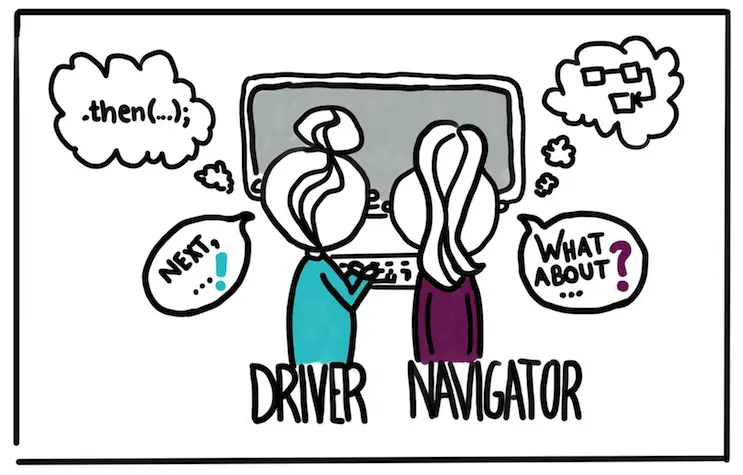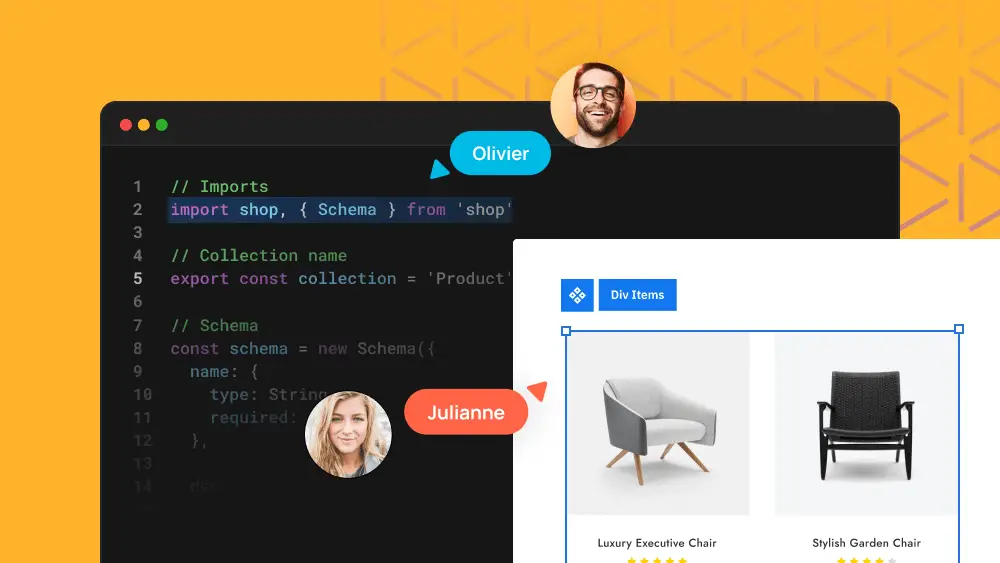Collaborative Coding To Reduce Errors: Pair Programming Perspectives

Pair programming is a technique in which two programmers work together at one workstation. While one, the driver, is writing code, the other, the observer or navigator, reviews each line of code as it is typed in. The two programmers continually switch roles.

Pair programming offers a number of benefits, including:

- Fewer errors: Studies have shown that pair programming can reduce the number of errors in code by up to 15%. This is because the observer is able to catch errors as they are made, and the driver is less likely to make mistakes in the first place.
- Improved code quality: Pair programming can also improve the quality of code. This is because the observer is able to provide feedback on the design and implementation of the code, and the driver is more likely to adopt best practices.
- Increased knowledge sharing: Pair programming can help programmers to learn from each other. This is because the observer is able to see how the driver approaches problems, and the driver is able to benefit from the observer’s feedback.
- Improved communication: Pair programming can help programmers to communicate more effectively with each other. This is because they are constantly discussing the code and its implementation, and they are able to learn from each other’s communication styles.
- Increased job satisfaction: Pair programming can increase job satisfaction for programmers. This is because it can make work more challenging and interesting, and it can help programmers to feel more connected to their colleagues.
Pair programming can be a valuable tool for development teams. It can help to reduce errors, improve code quality, increase knowledge sharing, improve communication, and increase job satisfaction. However, it is important to note that pair programming is not a silver bullet. It can be difficult to implement and it may not be suitable for all projects.## Pair Programming Perspectives: Collaborative Coding to Reduce Errors
Executive Summary:
Collaborative coding, or pair programming, involves two developers working together at a single workstation. This approach enhances code quality by fostering constant code review, improved problem-solving techniques, and knowledge sharing, leading to reduced errors and enhanced software reliability.
Introduction:
In the realm of software development, code precision is paramount. Minor errors can snowball into significant issues, hampering app performance and user experience. Pair programming is gaining traction as a powerful strategy to minimize defects and elevate code quality.
FAQs:
-
Can pairing hinder individual development?
- Pair programming actually promotes individual growth by providing continuous mentorship and fostering a mindset of continuous learning.
-
How to resolve conflicts during paired coding?
- Open and respectful communication is vital. Pair programming encourages regular discussions to identify and address discrepancies.
-
How to handle unequal skill levels during pair programming?
- The experience gap is an opportunity for knowledge transfer. The more skilled partner can guide and mentor the less experienced one, facilitating skill development.
Benefits of Pair Programming
-
Enhanced Code Quality: Continuous code review by two pairs of eyes ensures meticulous attention to detail, reducing syntax errors, logic flaws, and design issues.
-
Improved Knowledge Sharing: Pair programming allows developers to share their expertise, cross-pollinating knowledge, fostering a collaborative learning environment that expands the team’s collective wisdom.
-
Empowering Team Resilience: By working closely, developers develop a comprehensive understanding of the codebase and its intricacies, reducing dependencies and knowledge silos. This empowerment allows the team to respond swiftly to changes.
-
Boosting Project Productivity: Collaborative coding fosters a shared sense of responsibility, encouraging both pair members to contribute actively to the project’s success. Harmonious teamwork enhances productivity and efficiency.
-
Nurturing Continuous Improvement: Pair programming fosters a culture of ongoing reflection and refinement as developers constantly review and challenge each other’s code. This iterative approach promotes continuous improvement, leading to a more robust and maintainable codebase.
Conclusion
Pair programming has emerged as a proven technique to elevate code quality, reduce errors, and foster knowledge sharing within development teams. By embracing this collaborative approach, companies can harness the power of collective intellect, empower their teams, and cultivate software projects that stand the test of time.
Keyword Tags: Pair Programming, Agile Development, Collaborative Coding, Error Reduction, Software Quality

